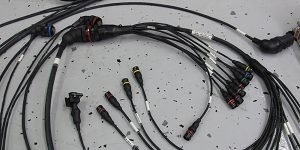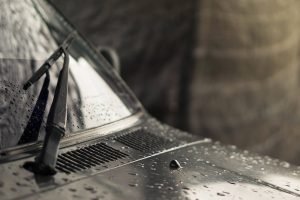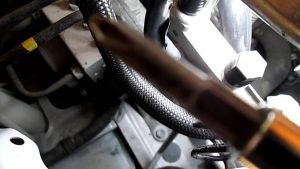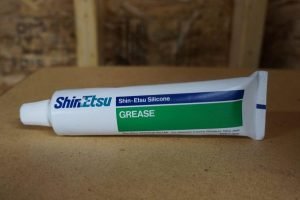
Contents
How to Clean Car Upholstery at Home: A Step-by-Step Guide
Keeping your car’s interior clean and fresh is crucial for both aesthetics and hygiene. While professional detailing is an option, cleaning your car upholstery at home is surprisingly manageable and cost-effective. This comprehensive guide will walk you through the process, ensuring you achieve sparkling results without any expensive cleaning solutions or tools.
🛒 Recommended Product
Before You Begin: Preparation is Key
Before diving into the cleaning process, thorough preparation is essential. This will save you time and effort in the long run and ensure the best possible outcome. Here’s what you should do:
- Clear the Clutter: Remove all items from your car’s interior – floor mats, trash, loose papers, and anything else that might be in the way.
- Vacuum Thoroughly: Use a handheld vacuum or the crevice tool attachment on your regular vacuum to remove all loose dirt, dust, crumbs, and pet hair. Pay close attention to seams, crevices, and under the seats. This step is critical for effective cleaning as it removes surface debris, allowing your cleaning solution to penetrate deeper.
- Assess the Upholstery: Identify the type of upholstery you have (fabric, leather, vinyl, etc.). Different materials require different cleaning methods, so knowing this beforehand is crucial. A quick check of your car’s manual can help clarify this.
- Test in an Inconspicuous Area: Before applying any cleaning solution to the entire upholstery, always test it on a small, hidden area (like under a seat) to ensure it doesn’t damage the material or cause discoloration.
Cleaning Different Upholstery Types: A Step-by-Step Approach
The cleaning process itself varies depending on your upholstery material. Here’s a general approach:
1. Fabric Upholstery:
🛒 Recommended Product
- Mix Your Cleaning Solution: Use warm water and a gentle cleaning agent. Avoid harsh chemicals.
- Apply the Solution: Lightly apply the solution to a clean cloth or sponge, avoiding over-saturation.
- Gently Scrub: Work in small sections, gently scrubbing the upholstery in the direction of the fabric weave.
- Rinse and Blot: Use a clean, damp cloth to rinse away the cleaning solution. Immediately blot up excess moisture with a clean, dry cloth or towel to prevent mildew and mold growth.
- Air Dry: Allow the upholstery to air dry completely. Avoid using direct heat or sunlight, which can fade the fabric.
2. Leather Upholstery:
- Use a Leather Cleaner: Choose a cleaner specifically designed for leather.
- Apply Sparingly: Apply a small amount of cleaner to a soft cloth and gently wipe the leather in small sections.
- Wipe Clean: Use a separate clean, damp cloth to wipe away any residue.
- Condition (Optional): After cleaning, consider conditioning the leather to keep it soft and supple.
3. Vinyl Upholstery:
- Simple Cleaning: Vinyl is usually quite easy to clean. A simple mixture of warm water and mild dish soap often suffices.
- Apply and Wipe: Apply the solution to a soft cloth and wipe down the vinyl.
- Dry Thoroughly: Dry with a clean, dry cloth.
Post-Cleaning Tips and Tricks
- Odor Removal: To eliminate lingering odors, sprinkle baking soda on the upholstery, let it sit for a few hours, and then vacuum thoroughly.
- Stain Removal: Address stains promptly. For tough stains, consider using a specialized stain remover designed for your upholstery type. Always test it on a hidden area first.
- Regular Maintenance: Regular vacuuming and occasional spot cleaning will help prevent dirt and grime from building up, making future deep cleans much easier.
Common Mistakes to Avoid:
- Using Harsh Chemicals: This can damage your upholstery and leave it looking dull.
- Over-Saturating the Upholstery: Excess moisture can lead to mold and mildew growth.
- Ignoring Stains: The longer you leave a stain, the harder it will be to remove.
- Using the Wrong Cleaning Tools: Harsh brushes can damage delicate fabrics.
- Not Letting it Dry Completely: Moisture can cause unpleasant odors and damage your upholstery.
By following these steps and avoiding common pitfalls, you can successfully clean your car’s upholstery at home, saving money and enjoying a fresh, clean interior. Remember, patience and attention to detail are key to achieving professional-looking results.
🛒 Recommended Product
FAQ
Q. How do I clean car upholstery stains effectively?
A. The best method depends on the stain. For fresh spills, blot (don’t rub!) immediately with a clean cloth or paper towel. For tougher stains, try a mixture of mild dish soap and water. Apply with a sponge, scrub gently, and blot dry. Stubborn stains may require a specialized upholstery cleaner; always test it in an inconspicuous area first. For grease stains, try using a degreasing cleaner, again testing it first. For pet stains, a pet stain remover is recommended, followed by thorough rinsing and drying to prevent odor.
Q. What’s the best way to clean leather car upholstery?
A. Leather requires a gentler approach. Use a leather cleaner specifically designed for automotive interiors. Avoid harsh chemicals and excessive scrubbing. Apply the cleaner according to the product instructions, then wipe clean with a soft, damp cloth. Condition your leather regularly to keep it supple and prevent cracking.
Q. How do I clean fabric car upholstery that’s heavily soiled?
A. For heavily soiled fabric, you might need a more powerful approach. A steam cleaner can be effective at loosening deep-seated dirt and grime. Always follow the manufacturer’s instructions for your steam cleaner and upholstery type. Alternatively, you can use a carpet cleaner designed for upholstery. Again, test in an inconspicuous area first. After cleaning, allow the upholstery to air dry completely, potentially using fans to speed up the process.
Q. How can I remove pet hair from my car upholstery?
A. Pet hair is a common problem! Use a stiff-bristled brush, a lint roller, or a vacuum cleaner with an upholstery attachment to remove surface hair. A rubber squeegee can also be surprisingly effective at lifting hair from fabric surfaces. For stubborn hair, try using a damp sponge to help loosen the hairs before vacuuming.
Q. What should I avoid when cleaning car upholstery?
A. Avoid using harsh chemicals, bleach, or abrasive cleaners, as these can damage the upholstery fabric or leather. Never use too much water, as this can lead to mold or mildew growth. Avoid using a washing machine to clean your upholstery; it may shrink or damage it irreparably. Always test any cleaning solution in an inconspicuous area before applying it to the entire surface. And finally, avoid rubbing aggressively, as this can spread stains and damage the fabric’s fibers.
Q. How can I prevent future messes in my car?
A. Prevention is key! Use seat covers to protect your upholstery, especially if you have pets or frequently transport messy items. Keep a small trash can in your car to prevent rubbish from accumulating. Consider using floor mats to protect your carpets. Regularly vacuuming your car will also help to prevent dirt and stains from setting in.
Related Articles
How to Install a Rearview Camera in Your Car
Back Up Safely: A Comprehensive Guide to Installing a Rearview Camera Driving has become significantly safer with the advent of rearview cameras. Thes…
how to maintain a car battery in cold weather
Keeping Your Car Battery Happy in the Cold: A Winter Survival Guide Winter’s chill can be tough on your car, and your battery is particularly vu…
Ceramic Coating vs. Wax: Which Protects Your Car Better in 2025?
Ceramic Coating vs. Wax: Which Protects Your Car Better in 2025? Recommended Product: Titanium Ceramic Wax Cream, 2025 Strong Protection Car Coating P…
Affiliate Disclosure: As an Amazon Associate, I earn from qualifying purchases made through links on this site.








